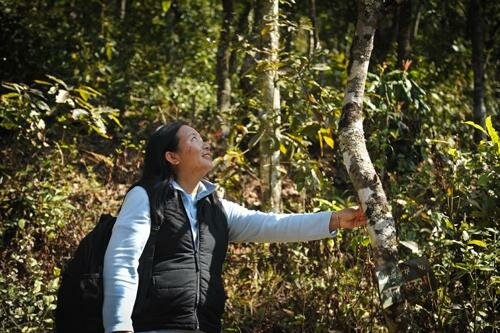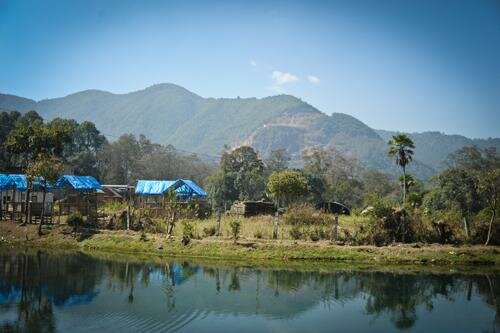Giving Thieves the Keys
A nation in a state of anarchy, Nepal can't save its forests by pushing policy. Instead, the responsibility of saving the forest is pushed into the very hands that would otherwise destroy it.
Putting a fence around a plot of land and defending it from people, is an absurd notion of forest conservation conceived by persons who have disconnected themselves from the natural world. In most precious habitats around the world, wild resources are as valuable to animals and insects, as it is to human communities.
Bird Conservation Nepal (BCN) has employed a strategy to save Nepal's birds by saving the people who might otherwise destroy them. They call it, "giving the keys to the thieves."
In 2005, BCN invited Community Forest Users Groups (CFUGs) to discuss ways to reduce their pressure on the forest. With support and training gained from partnerships with organisations such as the Whitily Fund for Nature, these groups have managed to generate the income needed for conservation and development activities.

The Naudhara Community Forest Group at the foot of Phulchowki Mountain, is one of seven CFUGs that have converged to conceive a unique and practical method to sustainably safeguard the productivity and biodiversity of their forest resource.
Phulchowki Mountain Forest, is an unprotected Important Bird Area (IBA) which lies 16 kilometres south of the capital city, Kathmandu. While the lower slope of the forest is managed by seven CFUGs, the upper slope of the mountain is managed by the District Forest Office (DFO). The DFO is an administration of Nepal's Department of Forests. Though it is not their primary role, the function of DFOs throughout the nation have been largely centered around poverty alleviation. Their plan is to promote and implement the use of non-timber forest products (NTFP) that are used for subsistence as well as for trade. In Nepal, NTFPs comprise four percent of the total contribution of forestry products to the national economy.
Successful implementation of NTFP programmes requires the participation of all stakeholders. Through managing the use of NTFPs, DFOs have been successful in creating rural employment and reducing forest offences. Engaging the "thieves" and taking away their motive to "steal" has proven to be a viable means to tackling problems and creating benefits for the users.

When BCN first became involved at the Phulchowki site, CFUGs used forest products (both timber and non timber) for their livelihoods, and the lower slopes of the forest were heavily degraded. In 2005, BCN invited the CFUGs to discuss various alternative ways to reduce their direct pressure on the forest. Over six months, BCN helped each CFUG to develop the necessary infrastructure, such as entrance gates, picnic spots, toilets, and information centres, and provided training on sustainable management of NTFPs and their markets. A single CFUG can comprise up to 150 households. Getting them to come together was not only a logistical challenge, facilitating a consensus of opinion was, and remains, a Herculean task.
The challenges don't exist merely within the forest communities, they are interwined with external societies as well. During the six months that BCN spent with the CFUGs at the Phulchowki site, a handful of promising youths were selected from the community and trained to become forest guides. Although experienced and knowledgable, these young forest guides have one significant handicap - they don't speak English as well as the guides from the city. Foreign tour groups that come to spot some of Phulchowki's 800 species of birds, often engage guides from the city, who might not be the most knowledgeable, but they speak fluent English. There are no guidelines in place that make it mandatory for tour groups to engage local guides; a practice that has proven successful amongst local forest communities in Malaysian National Forests. Local communities are also currently reliant on external organisations to assist with the pomotion of their forests for recreational use, and of services such as nature guiding.

As it is, the NRp10 entrance fee for locals on motorcycles is tricky enough to implement - when youths arrive in hordes and on their swift vehicles, it is easy for the solitary woman who manages the entrance toll to be intimidated or overwhelmed.
Observing the comings and goings of the forests' visitors over an hour and a half, it is apparent that the visitors are not so much here to appreciate the birds and the trees as they are here to speed up and cruise down the roads along its slopes. Now that the "thieves" have been educated, perhaps it's time for the rest of the society to go to school.

All photos by Debby Ng



 Debby Ng forayed into journalism following failed attempts at becoming a world-class equestrian. A wildlife crime investigator, underwater photographer, dive master and founder of a marine conservation organisation, she spends what remains of her time writing about the environment, its wildlife, and its people.
Debby Ng forayed into journalism following failed attempts at becoming a world-class equestrian. A wildlife crime investigator, underwater photographer, dive master and founder of a marine conservation organisation, she spends what remains of her time writing about the environment, its wildlife, and its people.














Post new comment